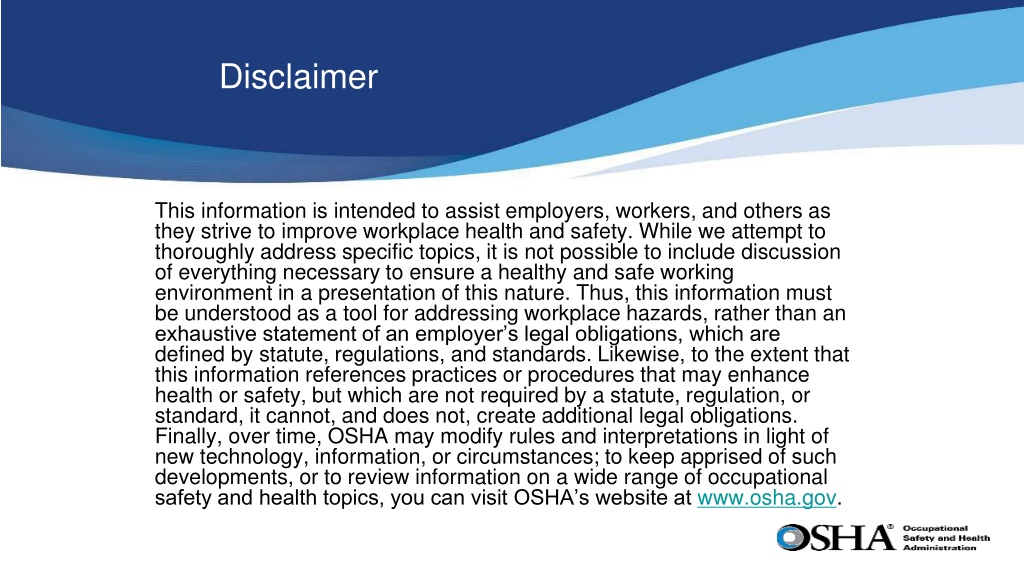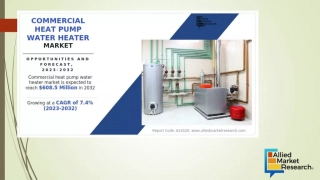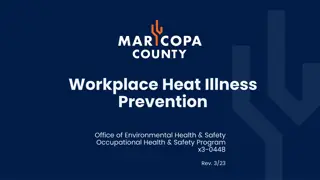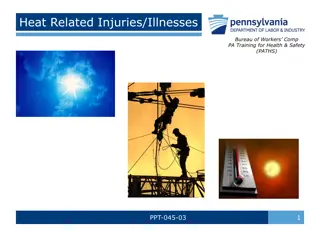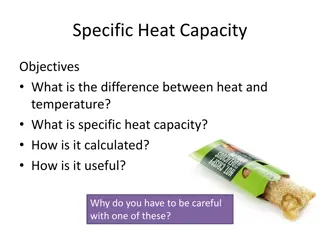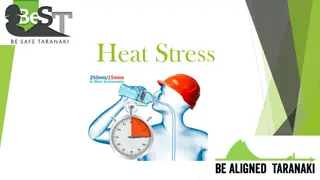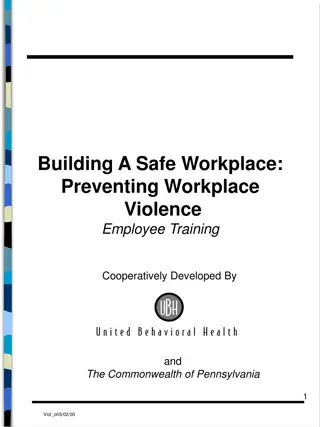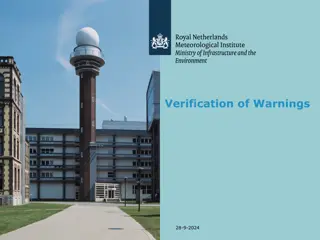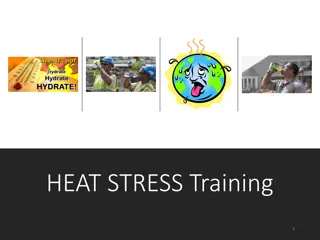Workplace Heat Safety Tips and Warning Signs
Learn about workplace heat safety measures to prevent heat-related illnesses. Understand how the body regulates temperature, signs of heat stress, and steps to take in case of heat-related emergencies. Stay informed and prepared to ensure a safe working environment during heat waves.
Download Presentation

Please find below an Image/Link to download the presentation.
The content on the website is provided AS IS for your information and personal use only. It may not be sold, licensed, or shared on other websites without obtaining consent from the author. Download presentation by click this link. If you encounter any issues during the download, it is possible that the publisher has removed the file from their server.
E N D
Presentation Transcript
Disclaimer This information is intended to assist employers, workers, and others as they strive to improve workplace health and safety. While we attempt to thoroughly address specific topics, it is not possible to include discussion of everything necessary to ensure a healthy and safe working environment in a presentation of this nature. Thus, this information must be understood as a tool for addressing workplace hazards, rather than an exhaustive statement of an employer s legal obligations, which are defined by statute, regulations, and standards. Likewise, to the extent that this information references practices or procedures that may enhance health or safety, but which are not required by a statute, regulation, or standard, it cannot, and does not, create additional legal obligations. Finally, over time, OSHA may modify rules and interpretations in light of new technology, information, or circumstances; to keep apprised of such developments, or to review information on a wide range of occupational safety and health topics, you can visit OSHA s website at www.osha.gov.
Heat Wave 2019 American Mushroom Institute Alliance
The body cools by circulating blood closer to the skin and sweating. In most environments a very effective method for maintaining body temperature. When the air temperature approaches body temperature and the relative humidity approaches the dew point the body s cooling plan looses effectiveness.
Temperature rises Humidity increases Sun gets stronger Air movement stops Torches, motors, pumps, heaters add heat Work clothes and PPE keep in body heat Lifting, moving, carrying causes the body to burn calories and produce heat
The body perspires profusely and the body loses salts and fluids The body stores the heat and the core temperature rises The heart rate increases Muscles cramp Dizziness and confusion Weakness and fatigue Nausea The body stops sweating
Heat Rash- skin irritation from the sweating Heat Cramps-sweating depletes the salts Heat Syncope-dizziness/fainting dehydration Heat Exhaustion-heavy sweating, weakness, dizziness/confusion, nausea, pale or flushed complexion, muscle cramps, slightly elevated body temp., fast shallow breathing Heat Stroke-hot dry skin or sweating, chills, slurred speech, hallucinations, headache
Heat stroke is a medical emergency that may result in death! Call 911 immediately Heat stroke is a medical emergency that may result in death! Call 911 immediately.
Employers can- Engineering controls- such as? Administrative controls- such as? Is there PPE? Provide Training- such as? Employees can- Wear light clothing Avoid alcohol and drink more water Monitor themselves and co-workers
